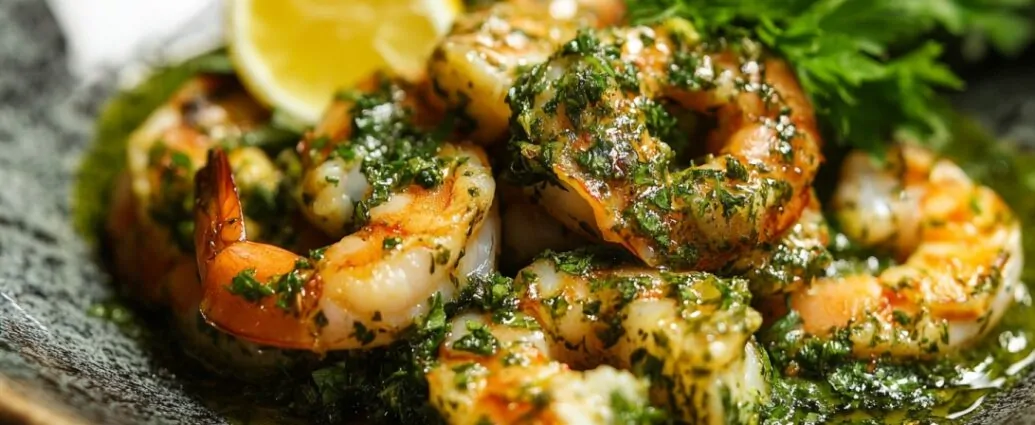Seasoning transforms seafood into a flavorful experience. Herbs play a key role by enhancing natural characteristics without overwhelming subtle textures or tastes.
A thoughtful pairing can elevate even the simplest dish.
The sections below offer guidance for choosing the right herbs depending on the fish type, preparation method, and regional inspiration.
The Flavor Profiles of Seafood
| Fish Type | Best Herbs |
|---|---|
| Cod, Haddock | Basil, Parsley, Tarragon |
| Salmon, Tuna | Dill, Chives, Smoked Paprika |
| Shrimp, Crab | Chervil, Sage, Lemon Myrtle |
| Mussels, Clams | Thyme, Garlic Chive, Rosemary |
Seafood varieties bring a range of textures and flavor intensities. White fish like cod and tilapia are mild and delicate, making them ideal for herbs that add subtle enhancement without overpowering.
Oily fish such as salmon or mackerel have more pronounced flavors that benefit from stronger herbal contrasts. Shellfish varies by type, with shrimp on the lighter end and crab or mussels offering fuller, more savory notes.
To help match herb intensity with fish type, consider the following:
| Seafood Type | Examples | Recommended Herbs |
|---|---|---|
| Mild white fish | Cod, Tilapia | Parsley, Chervil, Tarragon |
| Medium-flavored fish | Halibut, Trout | Basil, Dill, Thyme |
| Oily, full-flavored fish | Salmon, Mackerel, Tuna | Rosemary, Sage, Marjoram |
| Shellfish | Shrimp, Mussels, Crab | Chervil, Dill (for shrimp); Garlic Chives, Sage (for crab and mussels) |
Selecting herbs based on the natural strength of the seafood ensures a well-matched dish where no single ingredient overshadows the rest.
Balance brings out each element’s character while maintaining cohesion on the plate.

Essential Herbs for All-Purpose Seafood Pairing
Certain herbs work across most seafood types due to their adaptability in both flavor and preparation styles.
Their ability to enhance without overwhelming makes them reliable choices in everyday cooking.
| Herb | Flavor Profile | Best Uses with Seafood |
|---|---|---|
| Parsley | Fresh with a peppery lift | Ideal for nearly any seafood preparation. Adds brightness to grilled fillets or poached shellfish. |
| Dill | Slightly sour and savory | Matches beautifully with salmon, trout, and cream-based sauces. |
| Chives | Subtle onion essence | Used in herb butters or as a finishing touch. . |
| Basil | Sweet and peppery | Complements halibut, cod, and grilled seafood. |
The versatility of these herbs makes them essential for anyone cooking seafood frequently. Their consistent results and broad compatibility offer confidence in both simple and more involved recipes.
Herb Recommendations by Fish Type
Cooking seafood becomes more intuitive when herbs are selected to match the texture and strength of flavor in different fish types.
Mild fish benefit from gentle enhancement, while firmer, more intense varieties respond well to bold, aromatic notes.

White Fish (Cod, Halibut, Snapper, Tilapia)
Delicate and flaky profiles make these types ideal for herbs that are subtle but fragrant.
- Tarragon: Sweet with an anise-like character, often used to elevate light cream sauces or Béarnaise-style preparations.
- Thyme: Earthy and aromatic, ideal for maintaining balance in gentle dishes without overwhelming the fish.
Parsley or Basil
Excellent in lemon-based marinades or as a fresh crust.
- Lightly dress grilled fillets.
- Mix into breadcrumb toppings for baking.
- Garnish steamed portions with olive oil and sea salt.
- Oily Fish (Salmon, Mackerel, Tuna)
Bold and firm, these varieties need herbs that contrast and enhance their intensity.
- Dill: Clean and slightly sour; cuts through fat and adds brightness to seared or poached salmon.
- Rosemary: Strong and woody, best applied in small amounts.
- Use on grilled tuna steaks.
- Complement roasted mackerel with garlic and lemon.
- Infuse into marinades where heat softens its sharpness.
Smoked Paprika with Chives or Parsley
Combines heat and herbaceousness for layered flavor.
- Apply for pan-searing fish with a crusted finish.
- Blend into herb-forward compound butters.
- Add depth to foil-baked preparations.
Shellfish (Shrimp, Mussels, Clams, Crab)
Each shellfish variety brings its nuances, allowing for more playful herb matching.
| Herb | Flavor Notes | Pairing Suggestions |
|---|---|---|
| Chervil | Light and faintly sweet | Pair with crab bisque; Melt into warm herb butter for shrimp; Stir into mussels cooked in white wine and garlic |
| Sage | Earthy with a hint of bitterness | Add to stuffings; Use in sautéed preparations with brown butter; Mix into creamy shellfish pastas |
Lemon Myrtle or Lemon Pepper
Add bright, citrus-driven notes that lift sweetness in shellfish.
- Rub on shrimp before grilling.
- Sprinkle over steamed clams.
- Finish buttered shrimp skewers with a citrus pop.
Regional and Unique Herb Blends

World cuisines offer blends that match seafood in extraordinary ways. These combinations can elevate a dish with bold, layered seasoning profiles that traditional pairings might not deliver.
Australian Bush Herbs (Gewürzhaus) feature a mix tailored for local catches like barramundi or prawns.
These blends typically include:
- Lemon myrtle – adds bright citrus notes.
- Native thyme – brings an earthy, herbal base.
- Aniseed myrtle – offers a mild licorice-like finish.
Each of these elements contributes to a fresh, aromatic finish perfect for grilled or baked preparations.
Dukkah Spice Mix, drawn from Middle Eastern cooking traditions, combines:
- Ground nuts like hazelnuts or almonds
- Seeds such as sesame and coriander
- Dried herbs like thyme or mint
Used as a crust on fish like salmon or tuna, dukkah adds texture and a nutty finish that complements oily fillets beautifully.
Experimenting with regional combinations introduces new dimensions and complements more familiar herbs. Try pairing herb blends with a single fish type in different styles, grilled, pan-seared, or baked, to find the best balance.
Cooking Techniques and When to Add Herbs

Timing is crucial when working with fresh herbs. Certain varieties benefit most when cooked, while others retain their flavor and visual appeal when added at the end.
Marinades work well for infusing flavor evenly over time.
- Basil
- Thyme
- Rosemary
Let seafood rest in the mixture for a few hours before cooking for full effect.
Post-Cooking Garnishes keep herbs looking fresh and tasting vibrant.
- Parsley
- Chives
- Dill
These should go on right before serving to preserve their green color and subtle bite.
Baking with Herbs allows flavors to seep gently into the fish.
- Lemon slices
- Dill
- Rosemary
These not only add flavor but help keep the flesh moist.
Herb Butters and Crusts turn simple dishes into flavor-packed meals.
- Sage
- Garlic
- Breadcrumbs or crushed nuts

Spread over fillets or shrimp skewers, then roast or broil until golden.
Final Thoughts
Trying new herb pairings can transform seafood dishes and bring out unexpected notes.
Freshness should always be a priority, fresh herbs deliver vibrant flavor that dried alternatives cannot match.
Consider blending herbs inspired by regional cooking styles for exciting combinations. Let personal taste preferences and experimentation guide your culinary choices.



